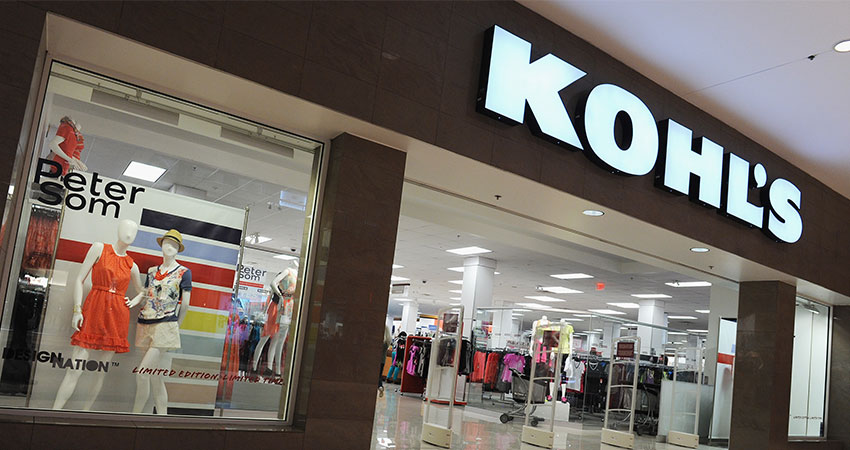Improving the omnichannel customer experience through personalization and its marketing, as well as an innovative promotion model, have been big initiatives for Kohl’s, attendees were told at eTail West.
Greg Revelle, CMO of Kohl’s said that the company’s core mission is to serve families with great products, savings and easy experiences.
Revelle said in 2012 the company stopped opening stores when it realized customer behavior had changed and sales were going backwards, signaling a dramatic change in its trajectory. “We recognized we needed to innovate, we needed to change how we worked,” said Revelle.
Two years later, Kohl’s created its “greatness agenda,” a strategic framework that undergirded the business. Part of this agenda was to inspire and empower families to lead fulfilling lives.
“The components underneath this purpose were quite flexible and changed over time,” said Revelle. “Personalization has been a relatively recent addition to these pillars of how we want to bring this to life.”
Revelle said as other retailers were closing stores Kohl’s has been able to hold the line as most of its stores remain profitable. The company has taken advantage of the downturn, he said, looking closely at brands failing competitors sell and activating local marketing to woo them in.
“When I started a couple of years ago, we were not doing great, sales were shrinking, but they have turned up pretty nicely since then,” said Revelle. “We have seen five straight quarters of positive comps, four quarters of a positive bottom line, we have returned a ton of money for our shareholders and our customer engagement levels are at an all-time high.”
The first of three areas of clarity Kohl’s established was around its customers, including an extensive segmentation effort to see who the next group of buyers will be.
“We looked across the landscape and divided the entire U.S. population into six cohorts,” Revelle said. “Of those, one fit the Kohl’s loyalist framework and then we identified a couple of other segments that we wanted to go after.”
Revelle said the next step was to identify what the segments had in common, including factors such as appreciation of value and a desire for quality and style.
“We looked at the retail landscape and we didn’t feel anyone was actually trying to do all of those things,” said Revelle. “It gave us a lot of clarity in terms of where we had a growth opportunity and where we could go and be a differentiator.”
The second area of clarity was in Kohl’s value proposition, recognizing that while it had great private and national brands, it needed new ones to freshen up the portfolio. It has since brought in Nine West, Lego and startup plus-sized brand Evri, a collaboration with the Property Brothers.
Kohl’s is also doing a partnership with lifestyle brand PopSugar, including collaborating on various looks using social data to drive design and product development.
Revelle said as customer expectations are changing and attention spans shortened, messaging needs to be more relevant and emotional connections are critical.
“It can’t be about product and price … It has to be about the interactions you have,” Revelle said. “If they’re not personalized, they’re not going to be as valuable. The fact is, personalization is expensive and incredibly hard to do.”
Revelle quickly added that Kohl’s has the resources and technology to make personalization possible and can be applied to the product, tapping its wealth of customer data and analytics.
Revelle said Kohl’s aims to bring the right message to the right channel at the right time, with the right offer and product in each engagement.
“We want to move from a very channel-centric view of the world and be cross-channel and customer centric,” said Revelle. “The thing is to move from where everybody sees the same thing to segmentation and ultimately one to one.”
To make this possible Kohl’s created cross-functional teams with the goal of creating the optimal customer experience each time. At the same time, it kept the focus on sales metrics and KPIs through customer centricity, speed and agility and technology.
Revelle said going forward personalization at Kohl’s will include more curated site content and a gamification component such as Meet Your Match, where footwear is selected based on customer data.


This is a terrific start for Kohl’s – dividing the U.S. population into six cohorts and identifying what the segments had in common is an excellent way to get started.
The next step on the journey is to customise the content that is most likely to engage each individual consumer.
https://uploads.disquscdn.com/images/4828a536d60a9675d844c3a54ca2c852a3ac0c4407a430e20f1d8184943eb318.jpg
Kohl’s can do this by:
1. Building a taste profile of each shopper’s unique tastes and interests.
2. Using a ranking algorithm to merchandise the best content for each shopper.
By knowing each shopper’s preferences across multiple sessions and transactions, Kohl’s can determine the best content for each individual shopper. This maximises relevance for shoppers and boosts revenue for Kohl’s.